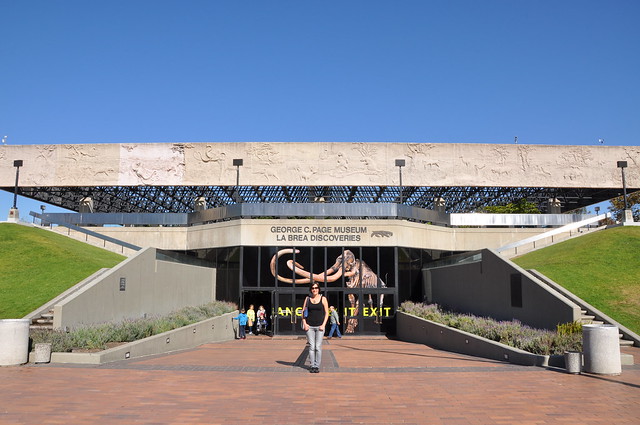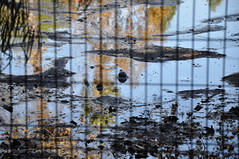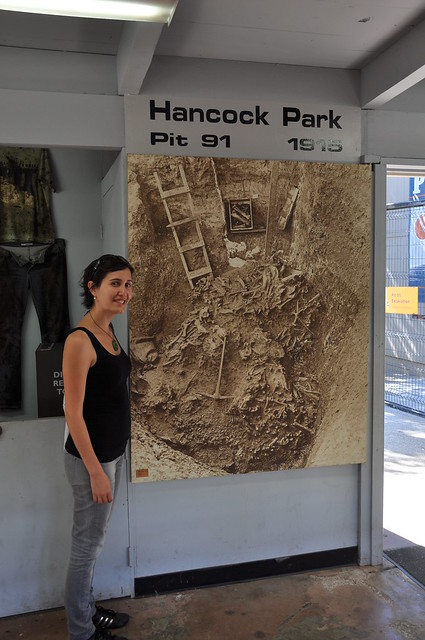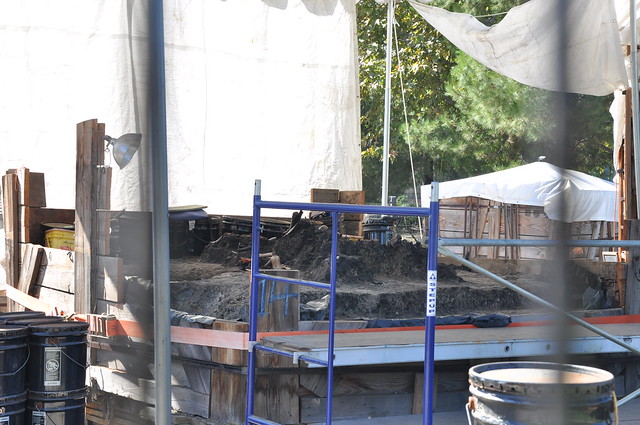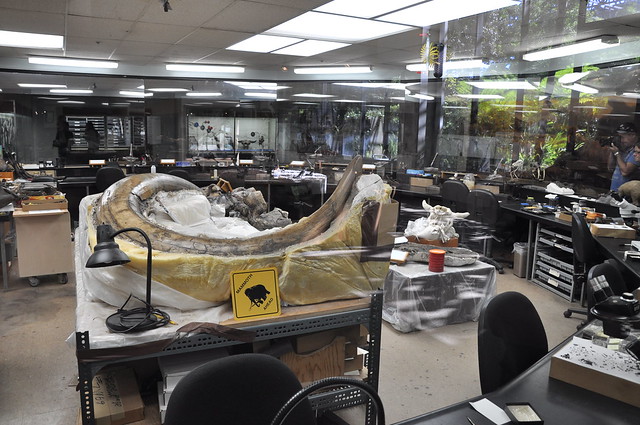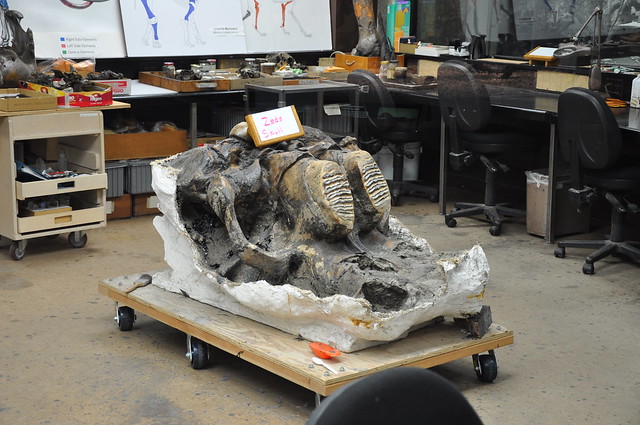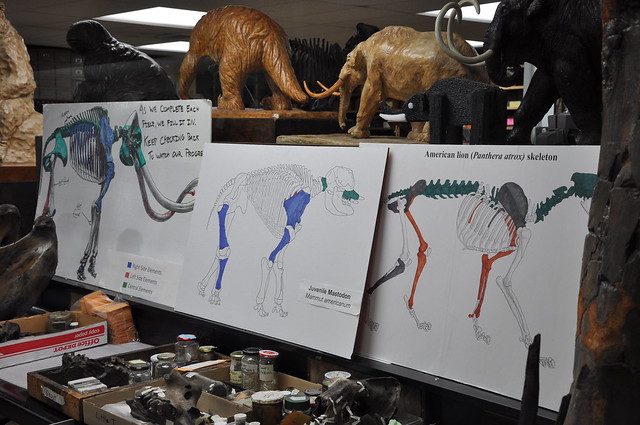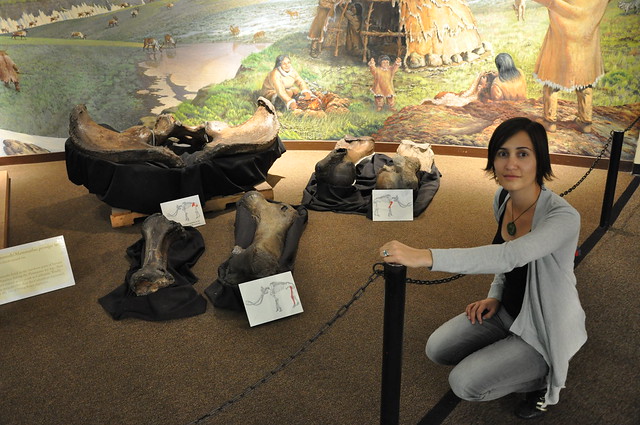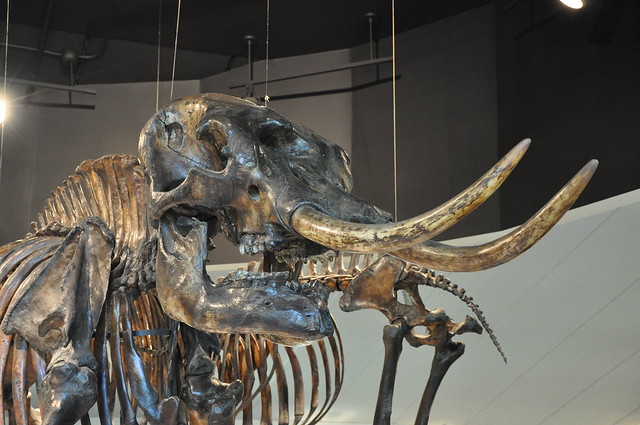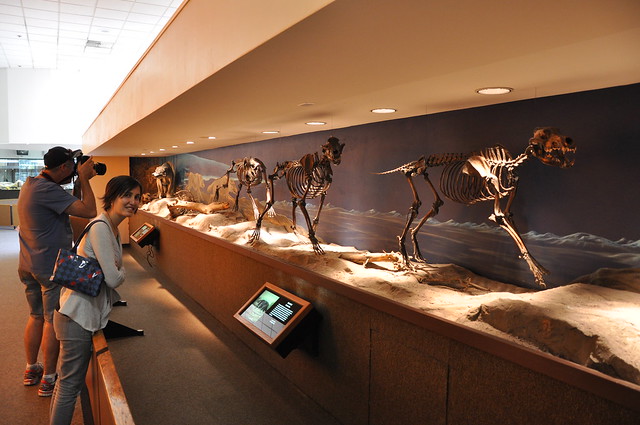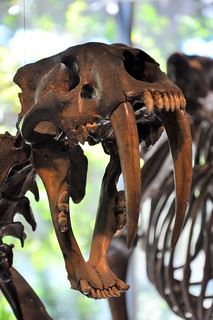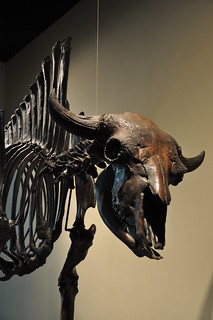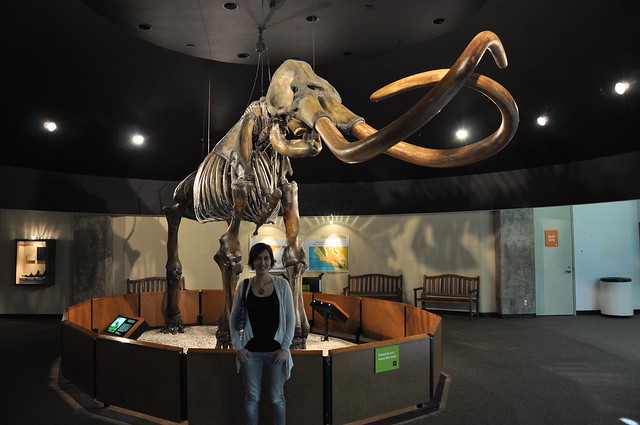Rob writing here. The next stop on our trip was the La Brea Tar Pits. The last time I was visited the tar pits was around 15 years ago, and as I enjoyed them so much I thought that Liz might as well.
The Tar Pits are a natural phenomenon, where asphalt rises up through the earth. They don’t look overly active or impressive, but gases do slowly bubble up through the tar in these open pits below.
In prehistoric times, thousands of unfortunate animals got stuck in the tar, died and their bodies were petrified. Below is an excavated tar pit, Pit 91, which was first worked on in 1913. Since then, millions of bones have been recovered. The collection of bones at the last census, in 1992, exceeded 3.5 million specimens. Impressively, the pit still contains more fossils and microfossils to recover.
However, they’re not working on that tar pit right now. In 2006 during the development of an underground car park, more petrified bones were found. 16 new fossil deposits were discovered, including a largely complete adult mammoth skeleton. The archaeologists nicknamed him Zed. This find was called Project 23 and all the deposits were put in boxes and moved into a small tent city next to Pit 91, as below. Archaeologists are cleaning the bones from this find in the ‘Fishbowl Lab’ in the Page Museum at La Brea.
Here is the Fishbowl Lab. No one was working when we were visiting, but usually you can watch the archaeologists cleaning the tar off the bones from the pits. They had both the tusks and the scull of Zed’s from Project 23 on display.
As shown in the image below, the scientists colour in the different skeleton parts as they finish processing them.
When they finish processing the bones, some of them get put on display. Here are Zed’s leg and hip bones.
These skeletons below aren’t mammoth bones, but are Mastedons, extinct relations of the elephant that were in North America. They would’ve been about the same size as an Asian elephant and predominantly grazed in forests.
There have been a thousands of different animals found in the pits and one of the most common is the dire wolf. Yes, like the dire wolves from Game of Thrones. The wolves would’ve become stuck when trying to catch prey that was already stuck in the tar. 4,000 dire wolf remains have been recovered in La Brea – 404 dire wolf skulls are on display below.
The dire wolf was no the only predator that came to feed on the animals stuck in the tar. There were also saber tooth cats!
But the main draw card of the museum was the skeleton on the mammoth that was found in Pit 91 in the 1940’s. This mammoth is a small adult specimen – Zed from Project 23 will be about a third larger.
La Brea Tar Pits were fantastic to see again and it was great to show them to Liz. We had a really enjoyable stopover in LA as well. But was time to get back to work.
Next post is about our little adventure at LAX.
Until then…

